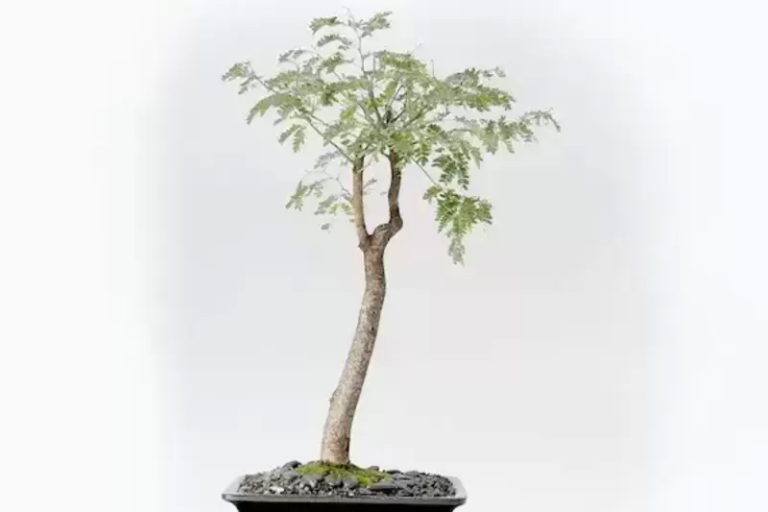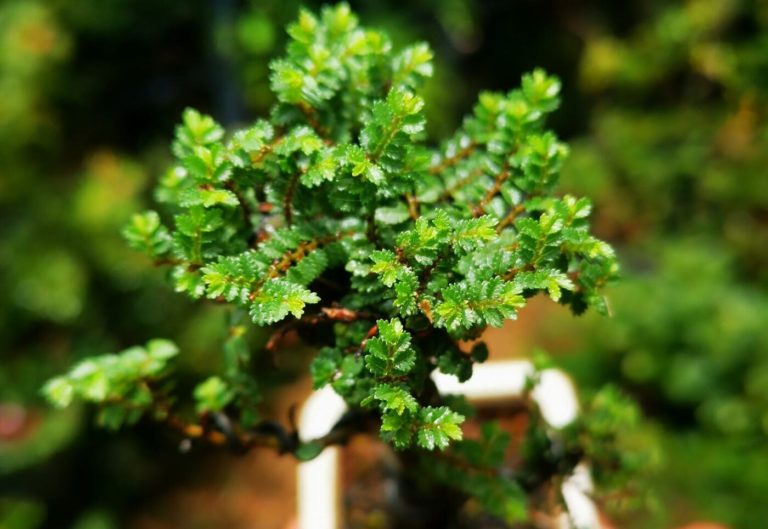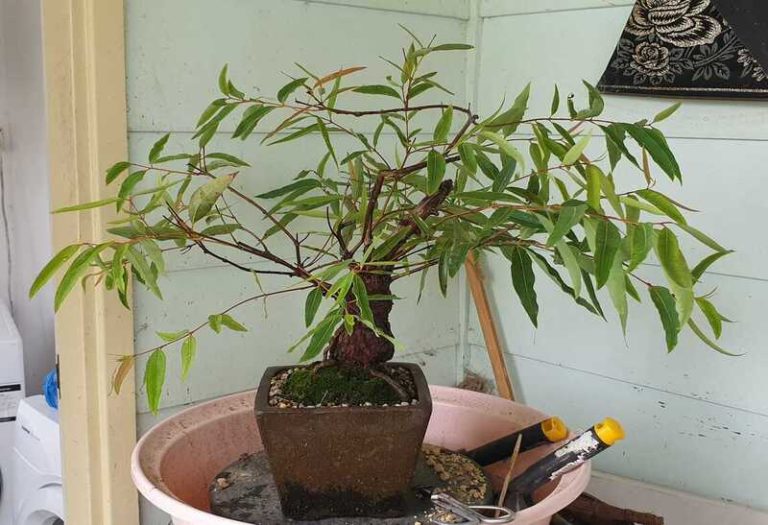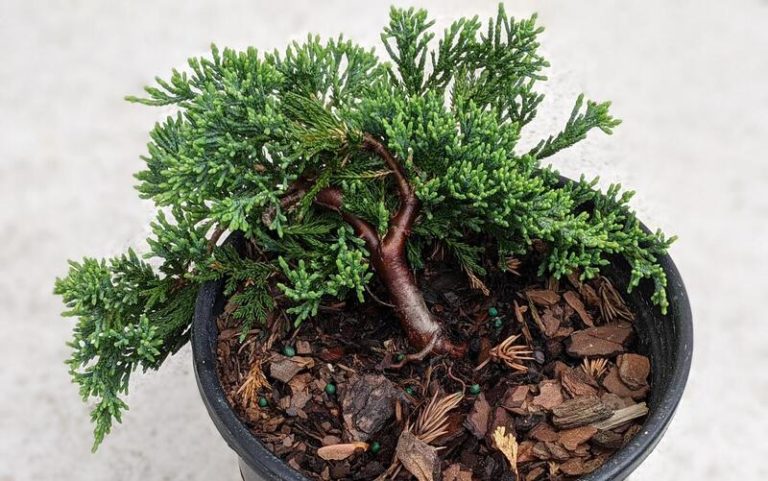Brazilian Rosewood Bonsai: Crafting Natural Artistry in Small Form
Have you ever heard of bonsai made from Brazilian Rosewood? Growing small trees that seem just like their full-sized counterparts is a fascinating art form. In this article, we’ll go into the world of Brazilian Rosewood bonsai and discover how to care for these lovely little trees.
What is a Brazilian Rosewood Bonsai?
A Rosewood from Brazil A bonsai is a tiny tree grown from the Brazilian Rosewood tree species using the technique of bonsai gardening. It entails sculpting and training the tree to look like a tiny replica of its original shape. The Brazilian Rosewood’s distinct characteristics, including as its exquisite leaves and lovely bark, make it a popular option among bonsai lovers. The tree is fashioned into an aesthetically pleasing and scaled-down depiction of a full-sized tree using techniques such as trimming and wiring. This approach takes special attention, but the end product is a compelling and aesthetic presentation of nature’s beauty on a small scale.
History and Origins of the Brazilian Rosewood Bonsai
The history and origins of the Brazilian Rosewood Bonsai are intertwined with the rich traditions of both bonsai cultivation and the remarkable Brazilian Rosewood tree itself.
Historical Roots of Bonsai:
Bonsai is an old Chinese and Japanese technique. It developed as a method to bring the beauty and tranquility of nature into smaller areas such as houses and temples. Bonsai grew from basic potted plants to sophisticated masterpieces that capture the essence of nature in small form throughout time.
The Brazilian Rosewood’s Contribution:
The Brazilian Rosewood tree, or Dalbergia nigra, comes from Brazil’s Atlantic Forest. In the past, this tree species was known for its valuable wood, which was used to make musical instruments, fine furniture, and other luxury items. Because it grows slowly and isn’t found in many places, Brazilian Rosewood wood is becoming more and more rare and protected, which makes it very valuable.
As growing bonsai became more famous around the world, people started looking at different kinds of trees to use in their art. The Brazilian Rosewood was a beautiful choice for a bonsai tree because of its grace, unique bark patterns, and delicate leaves. But because it is hard to find in the wild and is a protected species, using Brazilian Rosewood for bonsai is not only good for the environment but also shows how much people want to protect this amazing tree species.
Bonsai Enthusiasts’ Innovation:
Bonsai artists and fans took on the task of growing Brazilian Rosewood Bonsai, trying to capture its beauty on a smaller scale while still letting it grow in its natural way. By carefully choosing which plants to grow and how to train them, these hobbyists have made beautiful tiny versions of the Brazilian Rosewood tree.
Cultural Significance:
The Brazilian Rosewood Bonsai is about much more than just gardening. It shows how art, nature, and society are all connected. This combination shows how much people around the world care about nature and how creative bonsai artists can be. The Brazilian Rosewood Bonsai is a lesson of how important it is to protect and preserve rare tree species while also appreciating their beauty and cultural significance.
The history and roots of the Brazilian Rosewood Bonsai show how the art of bonsai has changed over time, how beautiful the Brazilian Rosewood tree is, and how much bonsai fans want to show this natural beauty in a small way. From old bonsai practices to the current growing of Brazilian Rosewood Bonsai, you can see how art and nature can work together to make something truly amazing.
Brazilian Rosewood Bonsai and Their Symbolism
Brazilian Rosewood Bonsai combines the cultural meaning of bonsai with the unique qualities of the Brazilian Rosewood tree to make a mark that has meaning in both cultures. Here are some things that the Brazilian Rosewood Bonsai represents:
- Elegance and Beauty:
The Brazilian Rosewood Bonsai embodies elegance and beauty in its delicate foliage, graceful branches, and intricate bark patterns. Its refined appearance symbolizes the pursuit of aesthetic perfection and the appreciation of nature’s inherent splendor.
2.Patience and Endurance:
The slow growth of the Brazilian Rosewood tree shows how much patience and hard work are needed to grow bonsai. Growing and caring for a Brazilian Rosewood Bonsai takes time and attention. This teaches fans the value of patience and the benefits of long-term commitment.
3. Connection to Nature:
Bonsai, including Brazilian Rosewood Bonsai, are a way to show how people are connected to nature. This small tree is a reminder of how much we rely on nature and how important it is to protect and care for our surroundings.
4. Adaptability and Balance:
To make a Brazilian Rosewood Bonsai, you have to shape and train the tree without changing how it grows naturally. This process shows the balance between what people do and how the tree naturally changes. It also shows how life needs balance.
5. Longevity and Wisdom:
Bonsai plants, like Brazilian Rosewood Bonsai, can live for a long time, and their growers often outlive them. This long life gives us a sense of knowledge and the passing of time. It reminds us that life goes on and that it’s important to leave something for the next generation.
6. Rarity and Rarity’s Value:
The Brazilian Rosewood tree is protected and hard to find, which makes it rare and expensive. This shows how important it is to be special and how important it is to protect and keep things that are valuable. Brazilian Rosewood Bonsai shows how much you appreciate rare beauty and how important it is to protect it.
7. Reflection and Contemplation:
Bonsai cultivation promotes reflection and awareness. Caring for a Brazilian Rosewood Bonsai necessitates careful observation and thought, building a bond between the grower and the tree as well as a chance for personal development.
8. Cultural Connection:
Rosewood from Brazil Bonsai connects cultures by combining the Japanese art of bonsai with the one-of-a-kind Brazilian Rosewood tree species. This symbolic union symbolizes the universality of art and nature appreciation, crossing borders and bringing people from all over the world together.
The Brazilian Rosewood Bonsai contains numerous levels of symbolism that represent ideals such as beauty, patience, balance, connection to nature, and the significance of protecting scarce resources. It serves as a visible embodiment of these ideals as a living piece of art, reminding us of our position in the natural world and our ability for creative expression.
Characteristics of the Brazilian Rosewood Bonsai
The Brazilian Rosewood Bonsai possesses several distinctive characteristics that make it a sought-after and captivating choice for bonsai enthusiasts. Here are some key features that set the Brazilian Rosewood Bonsai apart:
- Delicate Foliage: Brazilian Rosewood Bonsai leaves are thin, fragile, and frequently made of many leaflets. This delicate foliage contributes to the overall visual appeal of the tree and lends itself well to the various patterns and designs of bonsai gardening.
- Intricate Bark Patterns: The bark of the Brazilian Rosewood tree exhibits complex and one-of-a-kind designs that change as the tree ages. These patterns can range from minor striations to more dramatic textures, adding to the aesthetic attractiveness and authenticity of the bonsai.
- Elegant Growth Habits: The Brazilian Rosewood Bonsai grows gracefully and elegantly, with gently arching branches and a balanced canopy structure. This inherent beauty is accentuated by meticulous pruning and shaping, resulting in a balanced and aesthetically beautiful appearance.
- Limited Size: The Brazilian Rosewood tree is nurtured as a bonsai to remain tiny in size, generally ranging from a few inches to a foot or two in height. This small scale highlights detailed features and makes the tree perfect for both inside and outdoor display.
- Slow Growth Rate: The growth rate of the Brazilian Rosewood Bonsai is similar to that of its natural development in the wild. Bonsai aficionados must be patient as the tree’s change and development unfold over time.
- Rich Wood Colors: The rich wood tones of the Brazilian Rosewood tree range from deep reddish-brown to purple hues. This feature adds to the tree’s aesthetic appeal and the visual intrigue it adds to bonsai arrangements.
- Aromatic Qualities: Brazilian Rosewood is well-known for its pleasant scent, which is frequently characterized as sweet and fragrant. While the scale of the bonsai limits the strength of the aroma, it may offer another sensory depth to the experience of nurturing and admiring the tree.
- Exotic Origin: Brazilian Rosewood Bonsai has a unique charm, coming from the Atlantic Forest of Brazil. Its distinct origin and ties to a distant region add to its cultural and aesthetic value in bonsai art.
- Versatility in Styles: Brazilian Rosewood Bonsai may be designed in a variety of bonsai techniques, ranging from classic upright to more elaborate cascading and slanting types. Its adaptability allows bonsai artists to experiment with new interpretations while preserving the tree’s charm.
The delicate foliage, complicated bark patterns, beautiful growth habits, limited size, slow growth rate, rich wood hues, fragrant properties, exotic origin, and variety in styles distinguish the Brazilian Rosewood Bonsai. These traits combine to make the Brazilian Rosewood Bonsai a captivating and one-of-a-kind presence in the world of bonsai growing.

How to Grow a Brazilian Rosewood Bonsai
Growing a Brazilian Rosewood Bonsai necessitates paying close attention to its special requirements, which include a suitable climate, appropriate soil, enough sunshine, and frequent maintenance. Here’s a step-by-step approach on growing a successful Brazilian Rosewood Bonsai:
Selecting a Healthy Tree:
Start by acquiring a healthy Brazilian Rosewood sapling or pre-bonsai. Look for a plant with vibrant leaves, strong branches, and no signs of pests or diseases.
Choosing the Right Pot and Soil:
To avoid waterlogging, choose a bonsai container with drainage holes. Use a well-balanced bonsai soil mix that is aeration and water retention friendly. A combination of organic and inorganic components, such as peat moss or coconut coir, works well.
Repotting:
Repot your Brazilian Rosewood Bonsai after it has outgrown its pot (typically in the spring or early summer). Remove the tree from its old container with care, cut part of the roots, and set it in the new pot with fresh soil.
Sunlight Requirements:
Brazilian Rosewood Bonsai grows best in indirect sunshine. To avoid leaf burn, place it near a window with filtered sunlight or in partial shade. To guarantee balanced light dispersion on all sides, rotate the bonsai on a regular basis.
Watering Routine:
Water the bonsai when the top inch of soil feels slightly dry to maintain consistent hydration in the soil. Overwatering should be avoided since Brazilian Rosewood Bonsai requires somewhat drier circumstances than other species. To prevent disturbing the soil or injuring the branches, use a gently trickle of water.
Pruning and Shaping:
Pruning your Brazilian Rosewood Bonsai on a regular basis can stimulate healthy development and keep its form. Remove any dead or yellowing leaves, trim down any crowded branches, and shape the canopy of the tree to your preferred bonsai style.
Wiring and Training:
To attain the desired shape, carefully shape the branches with bonsai wire. Wrapping the wire too tightly might cause harm to the branches. Monitor the tree’s growth on a regular basis and alter the wiring as needed to guide its development.
Fertilization:
During the growing season (spring to early fall), feed your Brazilian Rosewood Bonsai with a balanced liquid bonsai fertilizer. To avoid overfeeding, which can lead to excessive growth, stick to the fertilizer label’s suggested amount.
Protection from Pests and Diseases:
Inspect your bonsai regularly for pests like aphids, spider mites, or scale insects. If you notice any signs of pests or diseases, treat the issue promptly with appropriate measures, such as insecticidal soap or neem oil.
Winter Care:
As Brazilian Rosewood Bonsai is sensitive to cold temperatures, ensure it is protected during the winter months. If you live in a colder climate, consider bringing the bonsai indoors or providing frost protection.
Patience and Enjoyment:
Growing a Brazilian Rosewood Bonsai is a lengthy process. Be patient and enjoy the process of caring your tree as it grows into a gorgeous tiny replica of its full-sized equivalent.
Remember that each bonsai enthusiast’s path is unique, and mastering the skill of nurturing a Brazilian Rosewood Bonsai may take some time. You’ll have the pleasure of seeing your bonsai bloom and become a mesmerizing living work of art if you give it the proper care and attention.
Displaying and Showcasing the Brazilian Rosewood Bonsai
Creating an atmosphere that accentuates the attractiveness of the bonsai while harmonizing with its aesthetics is an art in and of itself when displaying a Brazilian Rosewood Bonsai. Here are some pointers for properly displaying your Brazilian Rosewood Bonsai:
Choose the Right Display Area:
Choose a setting for your Brazilian Rosewood Bonsai that receives enough light. It should be a location where you and others can readily appreciate its beauty. Indoors near windows with filtered sunlight or outside in partial shade are good.
Bonsai Stand or Table:
Place your Brazilian Rosewood Bonsai on a bonsai stand or table to elevate it and give it prominence. Choose a stand that complements the style and size of the bonsai while adding to its visual appeal.
Matching Container:
Choose a bonsai container that complements the tree’s overall appearance. The color, form, and material of the container should complement the style of the tree and the surrounding surroundings. Avoid containers that overshadow the natural beauty of the bonsai.
Backdrop and Context:
Make a backdrop that compliments the appearance of the bonsai. A solid-colored wall, a simple backdrop fabric, or a natural setting, such as a garden, can all be used to bring attention to the bonsai. Ensure that the backdrop does not compete for attention with the tree.
Accent Elements:
Consider adding accent elements like small rocks, pebbles, or miniature figurines to the display. These elements can help create a more natural and balanced scene, enhancing the overall visual impact.
Rotation and Variety:
Rotate your Brazilian Rosewood Bonsai on a regular basis to guarantee uniform development and to keep it from leaning towards the light source. Changing its position allows for varied viewing angles and maintains the display looking new.
Group Displays:
If you have several bonsai trees, consider putting them together in a “bonsai forest” or “bonsai landscape.” This arrangement may convey a natural picture while also providing a new method to display your Brazilian Rosewood Bonsai with other trees.
Seasonal Themes:
Adapt your display to reflect the changing seasons. You can decorate the display area with appropriate seasonal accents, such as flowers, leaves, or miniature decorations, to enhance the overall theme.
Regular Maintenance:
Keep the display area clean and tidy. Regularly remove fallen leaves, debris, and dust from both the bonsai and its surroundings. Clean containers and stands to maintain their attractiveness.
Appreciate and Share:
Share your Brazilian Rosewood Bonsai’s beauty with others. Invite friends, relatives, or other bonsai aficionados to admire and learn about your work. Sharing your enthusiasm might also provide new views on your bonsai adventure.
Displaying a Brazilian Rosewood Bonsai entails providing a setting that draws attention to its beauty and distinctive traits. You may present your bonsai as a compelling piece of art that shows both your creativity and the beauty of nature by carefully selecting the display location, selecting the proper container and stand, making a suitable backdrop, and adding complimentary accessories.
How to Care for and Maintain a Brazilian Rosewood Bonsai
Caring for and keeping a Brazilian Rosewood Bonsai necessitates regular care and understanding of its special requirements. Proper maintenance will assure your bonsai’s health, development, and lifespan. Here’s a detailed guide on caring for your Brazilian Rosewood Bonsai:
Watering:
- Check the soil regularly by touching the top inch. Water when the soil feels slightly dry, but avoid letting it become bone dry.
- Water thoroughly until water flows out of the drainage holes. Ensure proper drainage to prevent waterlogging and root rot.
- Adjust the watering frequency based on the weather, season, and humidity levels.
Sunlight:
- Place your Brazilian Rosewood Bonsai in a spot that receives bright, indirect sunlight. Avoid the harsh afternoon sun, as it can scorch the leaves.
- Rotate the bonsai regularly to ensure even exposure to light and encourage balanced growth.
Pruning and Shaping:
- Regularly prune dead or yellowing leaves, as well as unwanted branches to maintain the bonsai’s shape and health.
- Prune after the growing season to encourage new growth in the next season.
- Use sharp and clean pruning tools to prevent damage and disease transmission.
Fertilization:
- Feed your Brazilian Rosewood Bonsai with a balanced liquid bonsai fertilizer during the growing season (spring to early autumn).
- Follow the fertilizer instructions for dosage and frequency to avoid overfeeding, which can harm the tree.
Soil and Repotting:
- Repot your bonsai every 2–3 years or when you notice the tree has outgrown its pot. Repot during the spring, before new growth begins.
- Use a well-draining bonsai soil mix that provides good aeration and drainage. Trim a portion of the roots during repotting to encourage new growth.
Wiring and Training:
- Use bonsai wire to gently shape branches and achieve the desired form. Be cautious not to wire too tightly to avoid damaging the branches.
- Monitor the growth and adjust the wiring as needed to guide the tree’s development.
Pest and Disease Management:
- Regularly inspect your bonsai for signs of pests such as aphids, spider mites, or scale insects. Address any infestations promptly.
- If you detect pests or diseases, treat them using appropriate methods such as insecticidal soap or neem oil.
Winter Care:
- Protect your Brazilian Rosewood Bonsai from cold temperatures, especially if you live in a frost-prone area. Bring it indoors or provide frost protection.
- Reduce watering during the dormant winter months to prevent root rot.
Humidity:
- Brazilian Rosewood Bonsai benefits from higher humidity levels. You can mist the leaves regularly or use humidity trays to maintain adequate moisture around the tree.
Observations and Adjustments:
- Regularly observe your bonsai for any changes in growth, color, or health. Adjust your care routine based on the tree’s response.
- Be patient and avoid making drastic changes; bonsai cultivation is a gradual process.
Your Brazilian Rosewood Bonsai will grow and become a gorgeous living work of art if you give it the necessary care and attention. Regularly attending to its requirements and encouraging its growth will result in a healthy and visually appealing tiny tree.
Brazilian Rosewood Bonsai Care Sheet
| Aspect | Care Tips |
| Watering | Check soil moisture; water when top inch feels slightly dry. Water thoroughly, ensuring proper drainage. |
| Avoid waterlogging; ensure pots have drainage holes. Adjust watering frequency based on weather and humidity. | |
| Sunlight | Place in bright, indirect sunlight. Rotate for even light exposure. Protect from harsh afternoon sun. |
| Indoor windows with filtered light or outdoor spots with partial shade are ideal. | |
| Temperature | Protect from extreme temperatures. Maintain a stable environment. |
| Keep away from drafts, sudden temperature changes, and frost. | |
| Humidity | Provide higher humidity levels, especially indoors. Use humidity trays or mist leaves. |
| Monitor for dry air, especially during winter when indoor heating is on. | |
| Fertilization | Feed with balanced liquid bonsai fertilizer during growing season. Follow instructions for dosage and timing. |
| Avoid overfeeding, which can harm the bonsai. | |
| Pruning & Trimming | Regularly prune dead or yellowing leaves and unwanted branches. – Maintain desired shape and health. |
| Prune after growing season; use sharp, clean tools. | |
| Wiring & Styling | Use bonsai wire for shaping branches gently. Adjust wiring as needed to guide growth. |
| Be careful not to wire too tightly, which can damage branches. | |
| Repotting | Repot every 2-3 years or when outgrowing the pot. Use well-draining bonsai soil mix. |
| Trim roots during repotting to encourage new growth. | |
| Pest & Disease Control | Regularly inspect for pests like aphids, spider mites, and scale insects. Address infestations promptly. |
| Use appropriate methods like insecticidal soap or neem oil for treatment. | |
| Winter Care | Protect from cold temperatures and frost. Consider bringing indoors or providing frost protection. |
| Reduce watering during dormant winter months. | |
| Regular Maintenance | Observe tree’s growth, color, and health regularly. Adjust care routine based on the tree’s response. |
| Be patient and avoid making drastic changes. |
Use this care sheet as a reference to provide the best care for your Brazilian Rosewood Bonsai. Tailor your care routine based on your bonsai’s specific needs and environmental conditions to ensure its health and vitality.
Conclusion
Having a Brazilian Rosewood bonsai in your house is like having a beautiful garden. With a little time and care, you can grow a lovely tiny tree that will impress your guests and bring nature’s beauty right to your door. So, be ready to embark on this fascinating bonsai adventure and watch your small tree grow!
FAQ
Q:What is a Brazilian Rosewood Bonsai?
A: A Brazilian Rosewood Bonsai is a miniature tree created through the art of bonsai cultivation from the Brazilian Rosewood tree species (Dalbergia nigra).
Q: What makes Brazilian Rosewood Bonsai special?
A: Brazilian Rosewood Bonsai is prized for its delicate foliage, intricate bark patterns, and elegant growth habits, making it a captivating choice for bonsai enthusiasts.
Q: How often should I water my Brazilian Rosewood Bonsai?
A: Water your bonsai when the top inch of soil feels slightly dry. Ensure thorough watering while avoiding waterlogging to prevent root rot.
Q: Where should I place my Brazilian Rosewood Bonsai for sunlight?
A: Place your bonsai in a location with bright, indirect sunlight. Avoid the harsh afternoon sun and consider rotating it for even light exposure.
Q: When should I prune my Brazilian Rosewood Bonsai?
A: Regularly prune dead leaves and unwanted branches to maintain shape and health. Prune after the growing season using sharp, clean tools.
Q: How do I shape my Brazilian Rosewood Bonsai?
A: Use bonsai wire to gently shape branches, guiding growth to your desired form. Be cautious not to wire too tightly to prevent damage.
Q: When should I repot my Brazilian Rosewood Bonsai?
A: Repot every 2-3 years or when the tree outgrows its pot. Opt for a well-draining bonsai soil mix and trim roots during repotting.
Q: How do I protect my Brazilian Rosewood Bonsai in the winter?
A: Shield your bonsai from cold temperatures and frost. Consider bringing it indoors or providing frost protection. Reduce watering during winter dormancy.
Q: What should I do if I notice pests on my bonsai?
A: Regularly inspect for pests like aphids, spider mites, and scale insects. If found, treat promptly with suitable methods like insecticidal soap.
Q: Can I display my Brazilian Rosewood Bonsai indoors?
A: Yes, you can display it indoors near windows with filtered sunlight. Just ensure it receives the proper lighting and care it needs.
Also Read:








